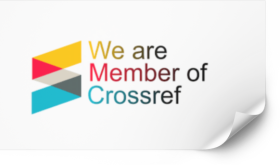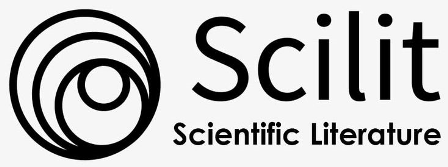Guidelines for Authors
Guidelines for Authors
Authors should submit their manuscripts electronically through SETS’s website submission system to the editorial team using the following link:
(https://sets.zenithacademic.co.uk/index.php/sets/about/submissions )
Manuscripts Preparation
Language and Quality: Manuscripts must be submitted solely in English and adhere to rigorous grammatical and terminological standards.
Single Submission Policy: To ensure fair consideration, authors may submit each manuscript only once. Multiple submissions of the same work will result in exclusion.
Title Page and Affiliation: Accompany your manuscript with a dedicated Title Page clearly stating the title and complete author information, including name(s) and affiliation(s).
Template Requirements: Ensure your manuscript adheres to the journal’s provided template for consistent presentation and organization. Download the template from the following link:
Language Requirements: SETS publishes exclusively in English. Authors whose native language is not English are strongly encouraged to ensure their manuscript uses clear and idiomatic English before submission. Both American and British English are acceptable. While not mandatory, ZENITH Academic Services separately offers language proofreading and editing services to help eliminate any potential grammatical or spelling errors. Authors who feel their manuscript may benefit from such services are welcome to utilize them. Any associated costs are the author’s responsibility.
Streamlined Online Submission: SETS offers a fully online submission process that seamlessly guides authors through each step of manuscript preparation and upload. To facilitate efficient refereeing, authors are encouraged to submit their manuscript as a single, integrated Word document (*.docx) that includes all figures and tables within the main file. This format ensures optimal readability and evaluation for the reviewers.
Originality and Authorship: By submitting a manuscript to SETS, all contributing authors affirm the following:
- The work presented is original and authentic, and neither this manuscript nor a significantly similar version has been published or is under consideration for publication elsewhere, including electronic forms in English.
- All authors have consented to the designated corresponding author’s role as the primary liaison with the editorial office, responsible for reviewing and approving the edited manuscript and proofs.
Prior Publication and Concurrent Submissions: SETS accepts only original work that has not been previously published in print or electronic format nor is currently under consideration for publication elsewhere. If any related or potentially overlapping material exists, including publications containing significantly similar content or utilizing the same data, authors must disclose and provide copies of such material at the time of online submission.
Structure of Manuscript
Manuscript Title: Concise and clear (max 15 words). Avoid locations, abbreviations, technical jargon, and vague expressions.
Abstract: 150-250 words summarizing the aim, methods, key findings, novelty, and conclusions. No undefined references or abbreviations.
Keywords: 4-8 keywords for indexing, alphabetized, no repetition of title words, no abbreviations. Define abbreviations at first mention.
Introduction: Briefly background and research aim with updated information.
Materials and Methods: Precise details for replicating experiments. Use SI units. Define statistical software, terms, abbreviations, and symbols.
Results: Clearly present and explain results. Self-explanatory figures and tables with no data repetition. Number tables and figures in text order.
Discussion: Critically review and interpret results supported by relevant recent references. Avoid data repetition. Briefly conclude.
Conclusion: Highlight major findings and contributions without literature references.
Acknowledgments: Separate section before references for people, grants, etc. Acknowledge funding sources and organizations fully. Include the grant number if applicable.
Conflict of Interest: Include a statement declaring none or disclosing any existing conflicts.
References: Numbered consecutively in square brackets as first mentioned, then listed at the end. Use reference manager software (EndNote, Mendeley, etc.). Minimum 20-30 references, mostly recent journal articles (within 5 years). Rarely cite textbooks and avoid web pages. All cited papers must be referenced in the text. Include DOIs when available. Cite sources in order of appearance: [1], [2], [3, 4], etc.
Author Contributions:
- Include a separate section detailing each author’s specific contributions to the research.
- Use a narrative format, clearly stating authorship roles and tasks (e.g., problem formulation, theoretical development, data analysis, supervision).
- Highlight collaborations and joint writing efforts.
Tables:
- Do not submit tables as images; use editable text format.
- Integrate tables within the text, utilizing the table function instead of spreadsheets.
- Ensure clear structure and numbering (consecutively).
- Provide informative captions, explaining components and identifying any republished material.
- Limit table captions above the table and footnotes below, using superscripts for additional information.
Figures:
- Submit high-quality artwork with a resolution between 200-300 dpi.
- Ensure clarity, proper labeling, and size suitable for publication.
- Integrate figures within the text, avoiding floating images.
- Obtain written permission to reuse previously published figures.
- Include concise captions below the figure, accurately describing its content.
- Identify all elements within the figure and use visual aids like boxes or circles for clarity.
- Cite any published material used in the figure caption.
Equations:
- Use the equation editor or MathType for all equations. Do not use images for presenting equations.
Review Articles:
- Review Articles require in-depth analysis and structured argument presentation.
- Critically evaluate and analyze existing literature in a specific field through summary, comparison, and classification.
- Use relevant theories, ideas, and research findings to support analysis and comparison.
- Present new insights or respond to existing works critically.
- Extensive database searches are expected to ensure comprehensive literature coverage.
- Aim for a minimum of 60 references, primarily journal papers, with 50% published within the last five years (depending on article length).
Open Access and Copyright: SETS operates as an open-access journal, making all its articles freely available to everyone. Published content is licensed under the Creative Commons Attribution International Public License (CC BY 4.0). This license allows individuals and organizations to:
- Download, share, distribute, and print full texts of articles
- Reproduce or link to articles in any medium,
While authors retain copyright for their published work on the SETS website, the journal actively promotes and tracks citations to increase recognition for their research.
In essence, CC-BY-4.0 encourages the widest possible dissemination and utilization of published articles as long as written permission and appropriate credit are given to the authors.



